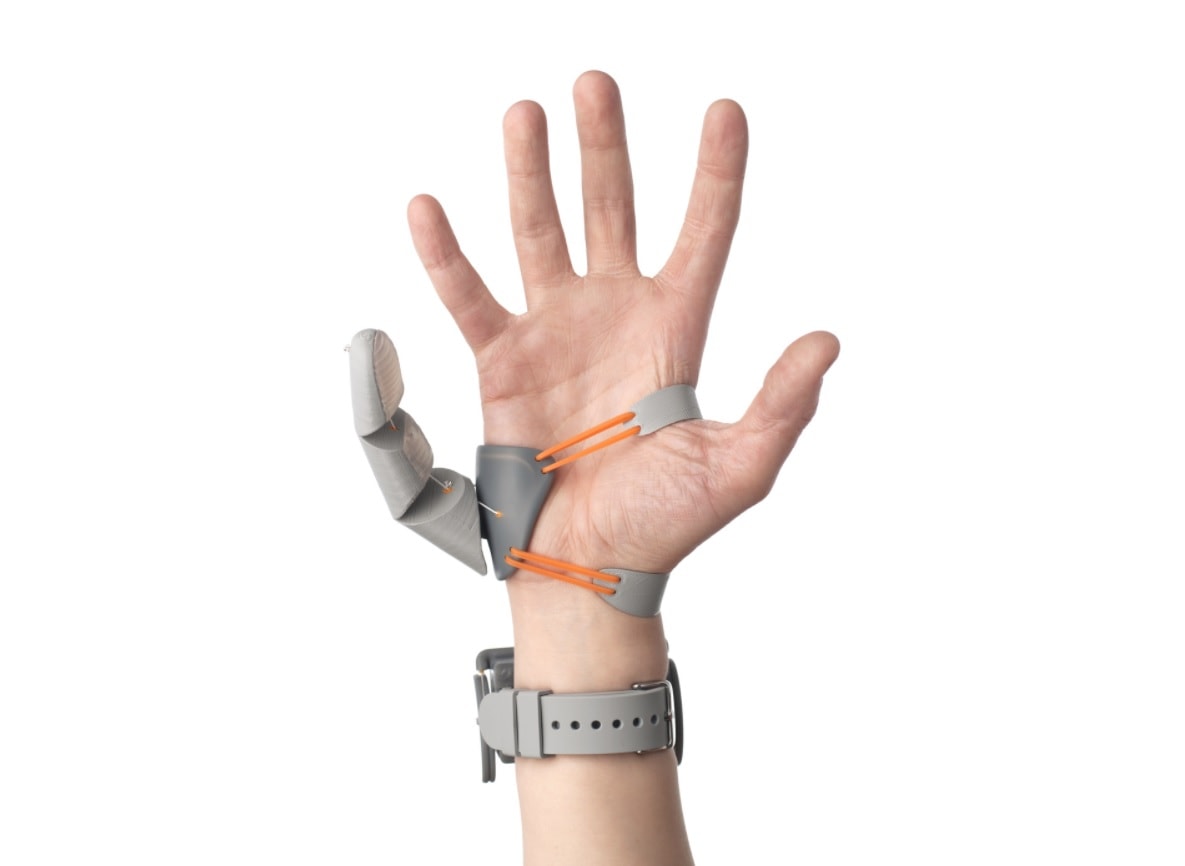Feel free to engage with or express your thoughts on this piece:
For eons, human hands have boasted a set of ten digits, a constant feature across the ages.
However, scholars from the University of Cambridge have introduced an innovative concept: the “Third Finger,” a customizable prosthetic extension affixed to the right hand’s periphery.
This augmentation facilitates various activities such as grasping objects, unscrewing bottle caps, shuffling cards, peeling fruits, and even threading needles, all achievable with a single hand.
In their investigation, human volunteers swiftly adapted to this additional digit, potentially expanding our manual dexterity beyond biological boundaries.
Operated by pressure sensors under each thumb, the Third Finger is positioned opposite the palm’s true thumb, with supplementary sensors linked to the big toe, enabling nuanced movements through subtle toe pressure alterations.
Originating from a graduate project at the Royal College of Art, designer Dani Clode, affiliated with UCL’s Plasticity Laboratory, spearheaded the development of the Third Thumb.
Functionality:
- Positioned opposite to the natural thumb, the Third Thumb receives commands wirelessly from a wrist sensor linked to an ankle strap.
- Microcontrollers embedded in the ankle strap, coupled with pressure sensors beneath the big toes, facilitate movement commands.
- Controlled by pressure from the right finger for lateral movement and pressure from the left finger for inward movement, the prosthetic digit seamlessly integrates into daily tasks.
This pioneering study, led by researchers from the University of Cambridge’s MRC Cognition and Brain Sciences Unit, was published in Science Robotics, envisioning a future where artificial enhancements alleviate human challenges.
While evolution isn’t anticipated to yield naturally enlarged thumbs, this technological adaptation presents a boon, particularly for amputees grappling with single-handed tasks.
Lucy Dowdall, one of the study’s authors, highlights the potential of the Third Finger to extend hand functionality, assisting in tasks necessitating multitasking or stability.
The study engaged 596 participants across various age groups, demonstrating a 99.3% success rate in acclimatizing to the Third Thumb, with 98% proficient in object manipulation within a minute.
Notably, older adults exhibited comparable proficiency, albeit with a slight decline correlating with age-related sensorimotor and cognitive changes.
While commercial availability remains uncertain, the researchers envision their innovation setting a precedent for immersive, human-centric technologies.
Shedding light on human hand evolution, recent genetic insights reveal two key genes influencing pectoral and toe ray formation, underscoring our evolutionary journey from polydactyl ancestors to five-digit beings.
The fossil record corroborates ancestral polydactylism, suggesting a gradual transition facilitated by environmental shifts and tool usage.
The adaptation of walking on two legs, concurrent with arboreal activity, catalyzed hand evolution, culminating in specialized manipulative abilities.
Manuel Dominguez-Rodrigo emphasizes this evolutionary narrative, bridging gaps in our understanding of human hand evolution and tool utilization.
